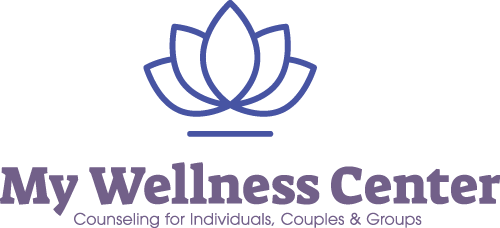Suicide is serious. If you’re at risk of hurting yourself or attempting suicide, call 911 or the suicide lifeline at 988.
September is Suicide Prevention Month—a time to acknowledge the members of our family, friends, and community who struggle with mental health and suicidal ideation. While the entire month is dedicated to suicide prevention, September 10 is World Suicide Prevention Day, a way to draw attention to a critical and global public health issue.
And suicide is a global public health issue. More than 700,000 die by suicide every year, according to the World Health Organization, and many more attempt suicide.
In the United States, around 50,000 people die by suicide each year—more than 100 people per day—according to the American Foundation for Suicide Prevention. Sadly, about 1.5 million people attempt suicide each year.
Other alarming facts from the CDC and SAVE (Suicide Awareness Voices of Education):
- Suicide is a top-10 cause of death among people ages 10-64 years old—based on 2020 data.
- Suicide is the 11th leading cause of death among all Americans.
- Suicide is the second leading cause of death among children and adolescents ages 10-14.
- Suicide is the second leading cause of death among adults ages 25-34.
But Suicide Prevention Month is an opportunity to fight back. As people, we can all do a better job of looking out for our family members, friends, and neighbors to ensure they’re receiving the mental health support they need.
To help, we’re taking a deeper look at suicidal ideation.

What Is Suicidal Ideation?
Suicidal ideation is when an individual thinks about taking their own life. It is often broken into active suicidal ideation and passive suicidal ideation, with the biggest differences revolving around the level of desire and the plan to act on that desire.
Active Suicidal Ideation
Active suicidal ideation involves having thoughts about suicide that include a specific plan or intent to end one’s life. The person might have considered how, when, and where they would commit suicide, and the thoughts are often accompanied by a sense of urgency.
Passive Suicidal Ideation
Passive suicidal ideation involves a desire to die or a wish that one was dead, but without any specific plan or intent to take one’s own life. The person might think about death or wish they could just “disappear,” but they do not actively plan to end their life.
What Causes Suicidal Ideation?
Suicidal ideation can be caused by a countless number of sources. That includes:
- Personality Disorder – Personality disorders can cause dysregulation and impulsivity—a dangerous combination that could lead to suicidal ideation.
- PTSD – PTSD—both acute PTSD and chronic PTSD—is often accompanied by feelings of worthlessness, shame, guilt, relationship issues, and trouble controlling emotions. All of this can lead to suicidal ideation.
- Depression – Depression is one of the most common causes of suicidal ideation. The overwhelming feelings of sadness, hopelessness, and worthlessness can make life seem unbearable.
- Anxiety – Anxiety is debilitating for some people, and it can interfere with work, hobbies, relationships, and more.
- Stress – Chronic stress, whether from work, finances, or personal relationships, can erode a person’s mental health over time. The constant pressure can lead to burnout, emotional exhaustion, and, in severe cases, suicidal thoughts as an escape from the unrelenting tension.
- Chronic Pain – Autoimmune diseases and other disorders that cause constant, intense pain can cause some individuals—especially those who’ve already tried a wide range of treatments—to consider suicide as a permanent solution to their pain.
- A Family History of Suicide – A 2002 study found individuals are 2.58 times more likely to attempt suicide if they have a family history of completed suicides.
- Drug And Alcohol Abuse – Substance abuse can create a cycle of mental health issues—which may result in suicidal ideation.
- Life Circumstances – School, work, debt, relationships, trauma—the stressors and circumstances of life can increase suicidal ideation.
- Psychological Medications – Prescription medications can cause a disruption in emotions and thought patterns. Always discuss your medications with your doctor and therapist, especially if you experience an increase in suicidal ideation.
- Recent Tragedies – Experiencing the sudden loss of a loved one, a traumatic event, or any significant life change can be a catalyst for suicidal ideation, as the grief and shock can be overwhelming.
Solutions for Suicidal Ideation
There’s no quick cure for individuals suffering from suicidal ideation—only immediate support and guidance on steps toward a better, happier future. Two of the best first steps is medication and therapy.
Medication
Medication can be a crucial step in managing suicidal ideation, particularly for those whose thoughts of self-harm are linked to underlying mental health conditions like depression, anxiety, or bipolar disorder.
Antidepressants, mood stabilizers, and other psychiatric medications can help balance the brain’s chemistry, reducing the intensity of suicidal thoughts and providing much-needed emotional stability.
While medication alone isn’t a cure, it can alleviate the overwhelming feelings that contribute to suicidal ideation, making it easier for individuals to engage in other forms of treatment, like therapy.
Medication works differently for everyone, and finding the right prescription may take time. Working closely with a healthcare provider is vital to monitor progress, adjust dosages, and manage any potential side effects. For many, the right medication can be a lifeline, offering a sense of hope and a foundation upon which other therapeutic interventions can build.
Therapy
Therapy is a powerful tool in combating suicidal ideation, offering individuals a safe space to explore their thoughts, emotions, and the underlying issues that contribute to their distress.
Through therapy, people can work with trained professionals to develop coping strategies, challenge negative thought patterns, and build resilience against the triggers that may lead to suicidal thoughts.
In addition to addressing immediate concerns, therapy also provides long-term benefits by fostering self-awareness and emotional growth. Regular sessions can help individuals identify the root causes of their suicidal ideation, whether it’s past trauma, unresolved grief, or chronic stress.
Over time, therapy can empower individuals to regain control over their lives, build a support system, and cultivate a sense of purpose and hope, all of which are essential in preventing future episodes of suicidal ideation.
Some of the most powerful therapies for suicidal ideation include:
- Cognitive Behavioral Therapy (CBT) – This evidence-based therapeutic approach can be particularly effective in helping individuals manage and reduce suicidal ideation. CBT works by identifying and challenging the negative thought patterns and beliefs that contribute to feelings of hopelessness and despair.
- Eye Movement Desensitization and Reprocessing Therapy (EMDR Therapy) – EMDR Therapy can be transformational in helping individuals reprocess traumatic memories and reduce their emotional impact. Learn more in What Is EMDR Therapy?
- Cognitive Processing Therapy (CPT) – CPT helps individuals reframe negative thoughts about trauma. By challenging and changing harmful beliefs, patients can reduce the emotional pain associated with trauma.
- Group Therapy – Group therapy can expand someone’s network to remind them that they’re not alone, and help them find support from individuals experiencing similar problems.
Find A Pittsburgh Therapist
If you’re struggling with suicidal ideation, contact us. Our compassionate therapists are here to provide life-changing support. If you’re ready to learn and grow, we can provide resources to help you blossom into a life of reduced pain—and increased hope.

